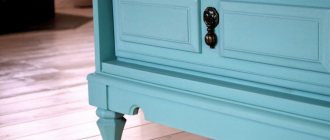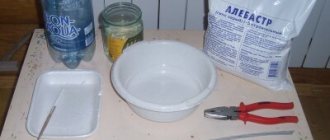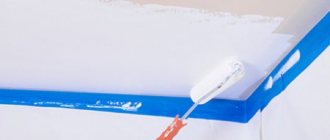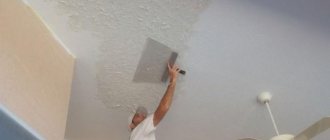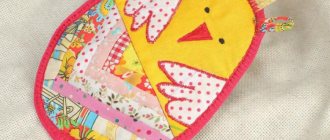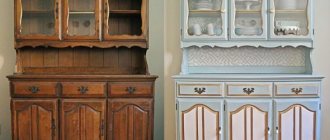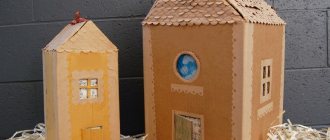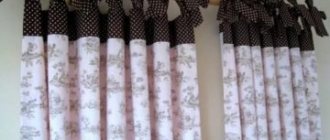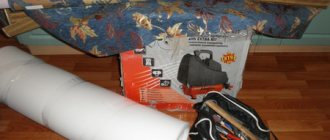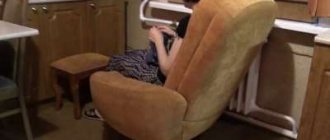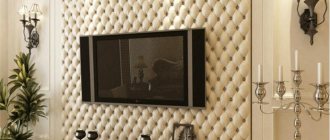Approaching the finish of the repair work and pasting the well-prepared surfaces of the walls or ceiling with the appropriate material, all that remains is to paint the wallpaper with water-based paint, giving the interior perfection.
The overall impression of the design of the room depends on a considerable number of factors: the type of coating, the type of decor and the method of its application. In this matter, it is important not only to understand which paint is suitable for wallpaper of one type or another, but also to understand the intricacies of application technology.
Assortment for painting
On the shelves of building materials stores there is a huge assortment of wallpaper: traditional, liquid, special non-woven wallpaper for covering. It is the last of this number that are purchased most often, because they make it possible to modify the design of the pasted canvases through new painting without carrying out major repair work.
Please note, to avoid color distortion, when painting, choose plain rolls. But it is best to give preference to white canvases.
How to choose?
Painting wallpaper with water-based paint is a serious task for which you should carefully prepare. Before starting work, it is worth determining which type of paint will suit the selected type of canvas. Let's take a closer look.
The use of certain materials for painting wallpaper directly affects the quality. This, in turn, determines the durability of coatings, their wear resistance and appearance.
When painting wallpaper, it is recommended to use only water-based paints. Not only water-based emulsion is suitable for the job, but also acrylic dispersion paint, which is environmentally friendly and suitable for treating dry residential areas with normal and slightly increased humidity levels.
Water-based wallpaper paint for painting can be diluted with any color shade.
Necessary preparation
So, preliminary work represents the first step, the high-quality execution of which determines whether your repair will be successful. The first step is to dust the room using a vacuum cleaner. Next, cover the baseboards or other elements with masking tape so as not to spoil them with paint.
Attention! In order to avoid long-term cleaning later, it is better to cover the entire surface of the floor with film, newspapers or any other material.
Features of latex coating
In addition to water-based or acrylic paints, many experts recommend using latex dispersion paint. This is a material characterized by safety and environmental friendliness. However, when using it, do not forget that depressurization of the packaging leads to very rapid drying of the contents. Therefore, you should paint the wallpaper immediately after opening the container. The composition is first diluted with water.
You will have to wait up to 72 hours for paint-impregnated wallpaper to completely dry. Consumption - one liter of diluted composition per six square meters of area.
The use of this type of paint for covering walls does not require preliminary impregnation with a primer. The main thing is to clean the surface and apply it to dry wallpaper.
Chemical cleaning methods
Chemicals should only be used on paper wallpaper as a last resort. This is acceptable if no other restoration method works. Aggressive stain removers damage the wallpaper coating and dissolve the paint on it. Such products should not be used in a children's room.
To clean the walls in the kitchen, you need to mix isopropyl alcohol, distilled water and window cleaner in a ratio (1:1:1), spray the drug onto the contaminated areas using a spray bottle and treat with a dry cloth.
If you need to remove ingrained odor, you need to prepare a similar mixture, but reduce the alcohol content by three times. It can be replaced with vinegar. The moistened napkin should be applied to the surface without force and ironed with a warm iron. These steps must be repeated several times. They do not steam it with an iron, but only heat the mixture, then quickly remove the napkin from the wall. The room must be well ventilated during work.
You can experiment with the composition of the cleaner, since the nature of the contaminants varies and it is not always possible to immediately remove old stains. A mixture based on isopropyl alcohol and pure gasoline helps clean greasy areas on the wallpaper from frequent touching with your hands. Sometimes white clay is used. It is applied wet, and after drying, carefully scraped off.
If the proposed methods do not help, experts recommend painting the old wallpaper. This action will help solve several problems at once.
When to start painting
After gluing the surfaces (walls or ceilings), let them dry, leaving them for a couple of days. Only after this proceed to painting the wallpaper with water-based paint. This is a mandatory condition, otherwise the canvas may fall off.
For non-woven coverings, it is better to use a hard brush to achieve better detailing of relief surfaces. Before starting work, experts recommend covering the floor with plastic film. This way you will avoid unnecessary work in the form of cleaning it from dried paint.
How to paint liquid wallpaper?
Masters quite often hear a similar question. It is due to the fact that people are worried about how safe it is to paint liquid wallpaper, and whether it can be done at all. Will such actions lead to irreparable consequences associated with damage to the coating? Not a single repairman can answer this question unequivocally, and even experts have their doubts.
In fact, the work associated with painting liquid wallpaper with water-based paint is not difficult. It all depends on the quality of the coating and the correct choice of decorating composition.
There is no separate type of product called paint for liquid wallpaper. But this does not mean that they are not subject to such coverage. Most craftsmen consider this type of work unjustified, because liquid wallpaper is initially characterized by a beautiful structure that does not require addition or decoration. Why spoil something that was already created for decoration?
Tools for work
Having decided whether it is possible to paint non-woven wallpaper, and with what means to do this, prepare the tools. The best result will be obtained by a spray gun or, as it is also called, a spray gun. Its use allows you to get an even coating without the slightest defects. Professional pneumatic devices are expensive and massive. A compact household version with an electric motor is suitable for the home.
A roller is used to apply the coloring agent. For smooth panels, choose a fur coat with short pile, for textured ones - with long pile. In any case, craftsmen recommend taking sheepskin or velor. They do not leave clots, streaks or air bubbles. Use a brush to paint hard-to-reach areas. You can paint the entire surface with it, but it is very difficult to do it evenly. There are almost always streaks left. Therefore, only hard-to-reach and small fragments are painted with a brush.
Some features of liquid wallpaper as a surface for painting
Please note that the qualities described below must be taken into account when painting wallpaper with water-based paint:
- This is a material with an interesting structure, and this fact is definitely worth taking into account. If the layer is thick, the texture may be hidden behind it; original colors and inclusions of sparkles, silk-screen printing, which adds even more exclusivity to the structure, will no longer be visible after processing.
- Liquid wallpaper is a material that can be easily removed from the walls by simply diluting it with water. And here it’s worth thinking about how practical it will be to paint such walls or ceilings if a partial renovation of the interior is required.
Please note that you can use a sprayer to paint ceiling wallpaper with water-based paint or liquid wallpaper on walls. This will make it possible to update the interior, change the shade of the coating and at the same time not subject to fundamental changes to the structure of the wallpaper. This process is not difficult. Even a person without experience in this field can cope with such treatment of surfaces finished with liquid wallpaper.
Before making a decision regarding painting wallpaper, weigh the pros and cons of such actions. Only then make a decision.
The benefits of painting wallpaper
Among the main positive factors, those who had to deal with such work identify the following:
- The ability to hide dirt and stains that have appeared on the surface of the wallpaper over many years of use. This is the easiest and most budget option to modify the interior.
- A chance to give the coating a fresh, updated look if it has faded due to sunlight.
- Numerous treatments if necessary.
- Painting wallpaper with water-based paint yourself makes it possible to choose any shade to create a harmonious, balanced interior design to your liking.
- The work is simple.
Technological features of painting modern wall and ceiling coverings
Having dealt with the intricacies of coloring liquid and non-woven wallpaper, let’s move on to a description of the technology itself. This process looks like this:
- In the first stages, prepare the surface.
- Next, work with the paint: add the desired shade of color (it is recommended to take 1-2 shades darker than the wallpaper itself), stir until the color and consistency are uniform. Choose water-based or acrylic paint for painting liquid or non-woven wallpaper.
- For application, use a roller, and if the work requires urgency, you can resort to automating the process, armed with a spray bottle.
- Let the surface dry thoroughly.
As you can see, painting non-woven wallpaper with water-based paint, wall and ceiling surfaces finished with liquid wallpaper is not a problem. This is a very real and affordable option to decorate a room in a new way, which does not require any special time, financial or labor costs.
Please note that plain non-woven wallpaper can be painted by applying a special roller that leaves imprints. This option looks interesting in the interior.
Anyone can cope with such work, even if you have never encountered repair work, because you have definitely had to paint or whitewash the interior of a house at least once in your life.
Use the recommendations given for processing wallpaper and follow the advice of experts to avoid possible difficulties during the work.
What else needs to be considered when choosing a material?
The main thing is choosing the right texture. If you settle on a correct, mathematically precise drawing - a geometric pattern, the wall will come out very strict and monotonous. With an unpredictable and chaotic arrangement of the image (imitation of crumpled paper), it may seem rough and careless.
Without wanting to resort to extremes, you can choose a middle ground - for example, fine texture in a chaotic pattern or zigzag bulges that soften chaotic lines. You can choose a repeating pattern, but with complexly curved, streamlined lines, leaves, flowers, diluting the monotony and not associated with geometry.
The size of the drawings is also of great importance. The imitation of large cracks attracts the eye, while small cobwebs escape attention. But the larger the image fragments, the closer the object is visually perceived. Therefore, such a print on wallpaper will not suit a small room; it will make it even smaller. For small rooms, it is better to choose a smooth canvas, a small chaotic texture or a repeating pattern of a small size - up to ten centimeters.
You cannot say that some designs or textures are beautiful, fashionable, etc., and others are not. Each consumer will choose something according to their mood and discretion. If you are a fan of regular, repeating, strict and clear lines, wallpaper with simple elements is suitable for you. And one more nuance: pronounced textures do not combine with glossy paint. Such work will look, to put it mildly, strange. Large-textured wallpaper and matte and semi-matte dyes fit together more organically.
